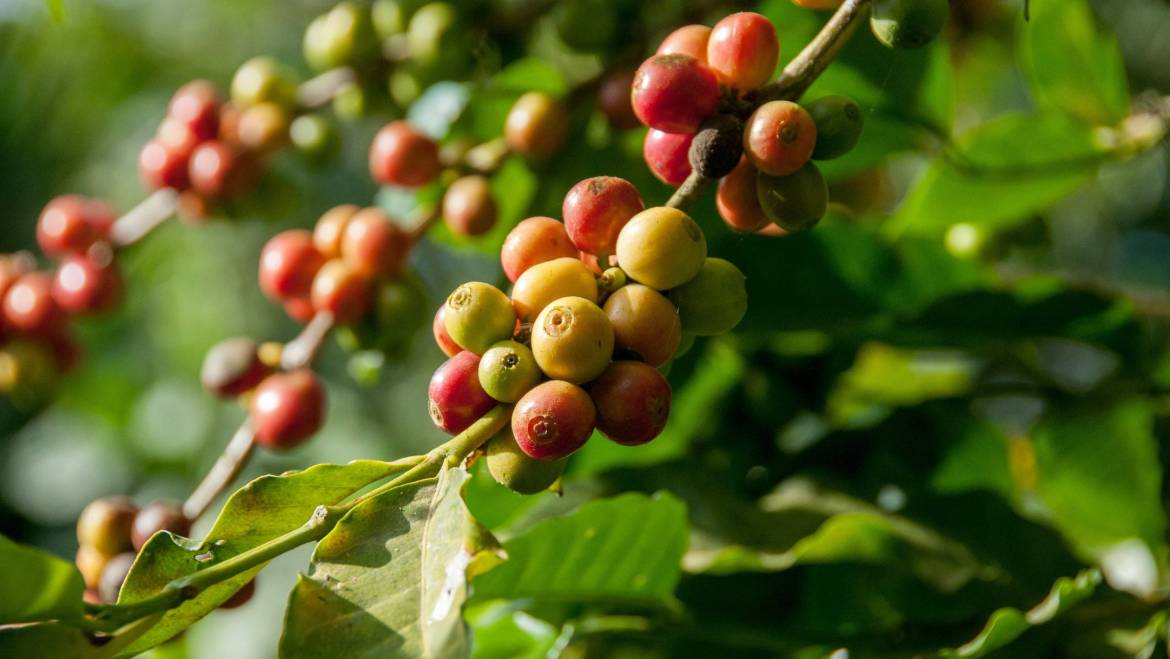Coffee: A Global Phenomenon
Coffee is a beverage that is liked all over the world and is consumed by millions of people every day. Coffee has a long and varied history, which contributes to its great variety of flavours, smells, and other distinguishing qualities. In this piece, we will discuss the numerous kinds of coffee, each of which has its own distinct characteristics, as well as the process of producing them.
1. Arabica Coffee: The Gold Standard
Arabica coffee, also known as Coffea arabica, is the most widely consumed type of coffee and is responsible for around sixty percent of the world's coffee output. Arabica beans, which originated in Ethiopia, are prized for their subtle, nuanced flavours and lower levels of caffeine compared to other types of coffee beans. Arabica coffee of the highest grade possesses a lively acidity, a delicate sweetness, and a variety of fruity, flowery, and nutty undertones.
Arabica coffee requires certain temperature conditions ranging from 15 to 24 degrees Celsius and grows best at higher elevations (1,000 to 2,000 metres above sea level). These elements add to the complexity of its flavour profile, which is one of the reasons why aficionados of speciality coffee seek it out so eagerly.
2. Robusta Coffee: Bold and Strong
Robusta coffee, also known as Coffea canephora, is the second most prevalent species of coffee and accounts for around forty percent of the total output of coffee worldwide. Robusta beans are noted for their robust, earthy flavours as well as their greater caffeine level when compared to Arabica beans. Robusta beans originate from sub-Saharan Africa.
Robusta coffee is capable of withstanding a broader variety of temperatures and climates, hence it is often produced at lower elevations (between 200 and 800 metres above sea level). Robusta coffee beans have a stronger flavour. Because of these features, it is more resistant to illnesses and pests, and it is also easier to cultivate. Robusta beans are frequently used in espresso blends because they provide a crema that is thick and rich, as well as a flavour that is robust and cuts through milk well.
3. Liberica Coffee: A Rare Treat
The Liberica coffee plant, also known as Coffea liberica, is an endangered variety of coffee that is indigenous to West Africa. Liberica beans are highly prized for their singular flavour character, despite the fact that their contribution to the world's coffee production is less than 1%. In comparison to Arabica and Robusta, these beans have a different look, being bigger and more asymmetrical than their counterparts.
The Liberica coffee has a full-bodied flavour that is characterised by a smokey and woodsy quality as well as undertones of dark chocolate and ripe fruit. The Philippines, Malaysia, and West Africa are the primary locations where it is cultivated, and these are the regions where it is most valued as a speciality coffee.
4. Excelsa Coffee: The Unique Blend
Excelsa coffee, also known as Coffea excelsa, is a species of coffee that is largely native to South-east Asia. It is not as well-known as other types of coffee. When it was first discovered, it was thought to be a distinct species; however, modern research has shown that it is actually a variant of the Liberica coffee plant. The tangy, fruity flavours and sharp acidity of Excelsa beans have made them famous across the world.
Excelsa beans are highly sought after by coffee enthusiasts because to the rich flavour profile and one-of-a-kind tasting experience they offer, despite the fact that they only account for a minuscule part of the world's total coffee production. In order to get a greater sense of depth and complexity, they are frequently mixed with other types of coffee.
5. Coffee Processing Methods
The flavour profile of coffee beans is substantially impacted by the technique of processing that is employed on the beans. There are three basic approaches to processing: washing, leaving the product in its original state, and adding honey.
- Washed Process: Depulping the coffee cherries is one technique for removing the outer peel as well as the pulp from the beans. After this step, the beans are fermented in water to further break down any leftover mucilage, after which they are washed and dried. Coffees that are processed with the washing method often have a lively acidity and flavours that are distinct and clean.
- Natural Process: The process of drying coffee cherries in the sun, while keeping both the peel and the pulp intact, is referred to as the dry process. The beans take on a flavour that is similar to wine and fruit when prepared using this approach. Coffees that are processed using natural methods often have a stronger body and less acidity compared to washed coffees.
- Honey Process: This technique is a combination of the washing and natural process approaches. During the drying process, the coffee cherries have their pulp removed, but the mucilage remains on the coffee beans itself. The quantity of mucilage that is left over at the end of the honey processing is what defines the "colour" of the honey: white, yellow, red, or black. Honey process coffees have a wide variety of flavours, blending the fruity sweetness of natural coffees with the clarity of washed coffees. This results in a coffee that has a range of flavour profiles.
6. Coffee Roasting Profiles
The roasting process is essential to the development of the flavours that are extracted from coffee beans. Light, medium, and dark are the three primary categories used to describe roasting characteristics.
- Light Roast: Beans that have been lightly roasted have a light brown colour, a high acidity level, and flavours that are lively and delicious. As a result of their ability to maintain the bean's origin qualities, these roasts are extremely popular among fans of speciality coffee.
- Medium Roast: Roasts that are considered medium have a colour that is somewhere between light and dark brown, and their flavours include a harmony of acidity, sweetness, and bitterness. These roasts are designed to highlight not only the origin qualities of the bean but also the roasting procedure.
- Dark Roast: Beans that have been darkly roasted have a flavour that is powerful and robust while having a low acidity level and a colour that ranges from dark brown to black. These roasts are distinguished by their smoky and bitter undertones, and they frequently cover up the bean's natural flavours.
7. Coffee Brewing Techniques
The brewing technique used to prepare coffee influences the final flavor, body, and aroma. Some popular brewing methods include:
- Pour-Over: A manual brewing method that involves pouring hot water over ground coffee in a filter. This method produces a clean, balanced cup with a medium body and well-defined flavors.
- French Press: A steeping method where coffee grounds are immersed in hot water and then separated using a plunger and metal filter. This method yields a full-bodied, rich cup with a heavier mouthfeel.
- Espresso: A pressure-based brewing method where hot water is forced through finely ground coffee, extracting a concentrated shot with a thick, velvety crema. Espresso can be enjoyed on its own or used as a base for milk-based drinks like lattes and cappuccinos.
- Cold Brew: A slow extraction method where coffee grounds are steeped in cold water for an extended period (12-24 hours). Cold brew produces a smooth, low-acidity coffee with a sweet, mellow flavor profile.
Conclusion
By developing an awareness of the qualities that distinguish one coffee from another, one might get a deeper appreciation for the vast array of coffees available. Each component, from the species and processing procedures to the roasting profiles and brewing processes, contributes significantly to the overall cup that is produced. You'll be able to adjust your taste preferences and open yourself up to brand-new and interesting coffee experiences if you investigate these elements.
Relevant Source:
- International Coffee Organization: "Coffee Market Report." Link
- National Coffee Association USA: "The History of Coffee." Link
- Specialty Coffee Association: "Arabica Coffee Varieties." Link
- Coffee Research Institute: "Growing Coffee Beans at Home." Link
- Perfect Daily Grind: "A Guide to 3 Popular Coffee Processing Methods." Link
- Coffee Review: "How Coffee Processing Affects Flavor." Link
- Stumptown Coffee Roasters: "The Art and Science of Roasting." Link
- Counter Culture Coffee: "Coffee Brewing Guide." Link
If you looking to hire a mobile coffee service to suit your requirements and impress your guests in Adelaide. We’d love to help if you’re hiring a coffee van for your event, simply contact us now.




Add Comment